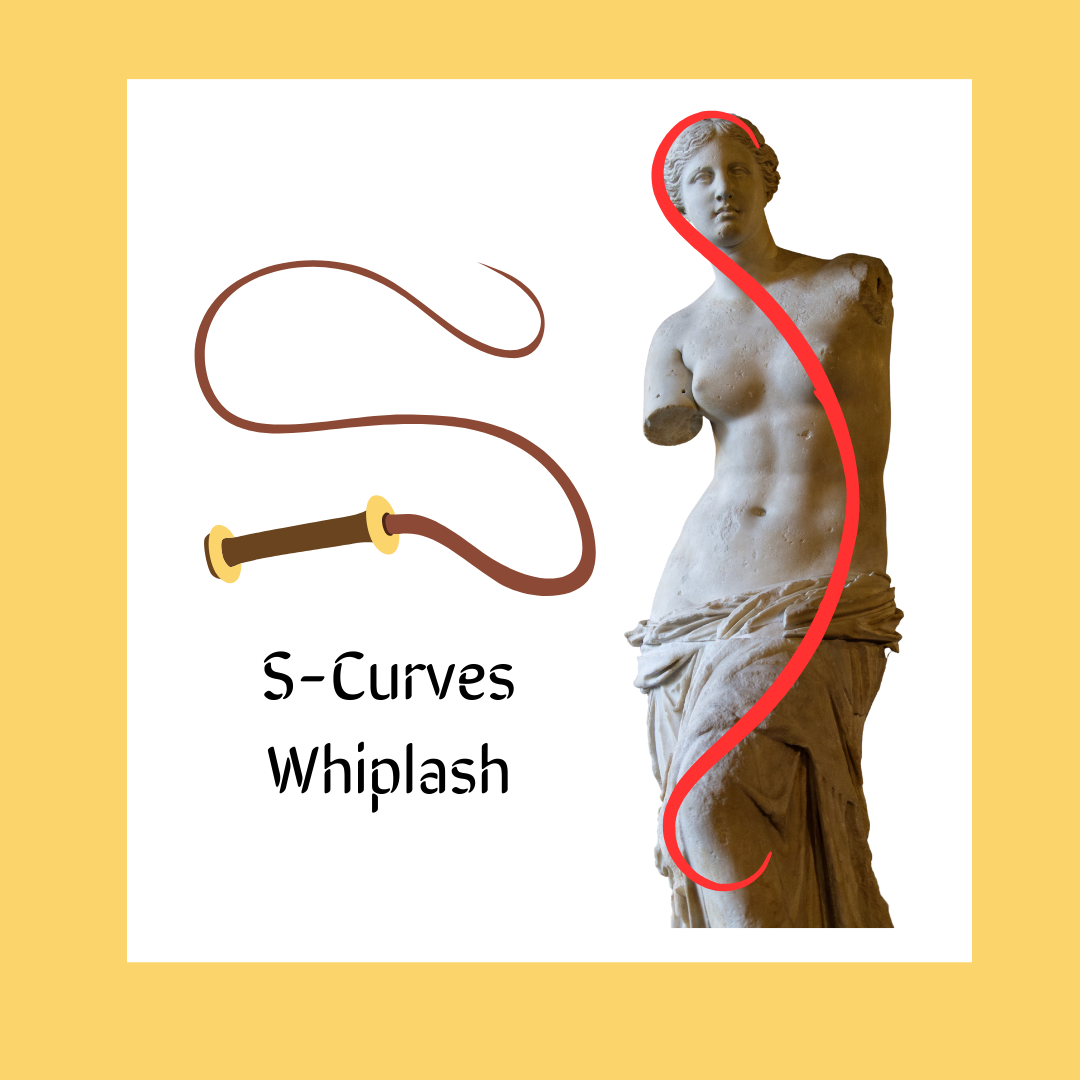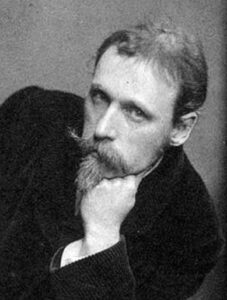
Image Credit: Wikipedia
Walter Crane had a relatively short life, but his contribution to art and literature was immense. He was born on August 15, 1845, and he died on March 14, 1915. He was an illustrator who was among the group labeled as the Golden Age of Illustrators. But beyond that, he was a master designer

In the above illustration, Crane has placed the fiddles so that both they and their boys move the viewer’s eyes. Yet, the sense of design is subtle, and the illustration appears more natural than designed.
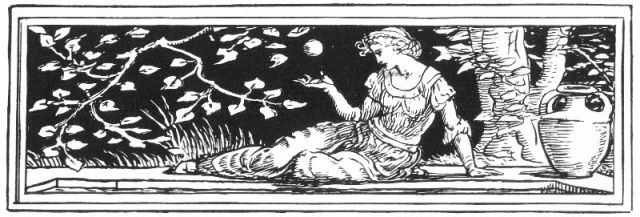
The girl above aces one way, and one hand adds emphasis to that direction, and the other hand pulls the viewer’s eyes back to the opposite direction. The tree limbs pull the viewer’s eye back toward the figure. Again, the viewer’s eyes are directed all through and around the page. That is masterful design.
In my opinion, Crane’s best work reflects his use of the principles of Art Nouveau, which includes of Whiplash and S-Cuves in design:

The above illustration is much more than a drawing of 2 horses. The reins of the horses, their manes, and their tails reflect a use of whiplash lines, which direct the viewer’s eyes thoughout and around the page.The follwing illustration of a horse exaggerates the use of whiplashed line
Most of his art and illustrations employ whiplash or long, flowing lines that seem to wind in, through, around, and out of his images. Most of his human models are placed in an S-Cuve, which is a type of whiplash, rather than in a straight position.

The figures in the above illustration are not standing straight, like soldiers at attending, They are placed in variations of the S-curve.

The gowns on most of his female figures reflect a use of curved, whiplash lines.You also see the same whiplash in some of the male costumes
.
Notice the Whiplash lines in the following illustration:
s:

The foliage of most flowers lend themselves to whiplash lines. Notice how foliage has molded itself into the form of a knight:

Even when you may not realize it, Walter Crane’s best illustrations are well-designed:
Notice how the entirety of the dragon is floral:
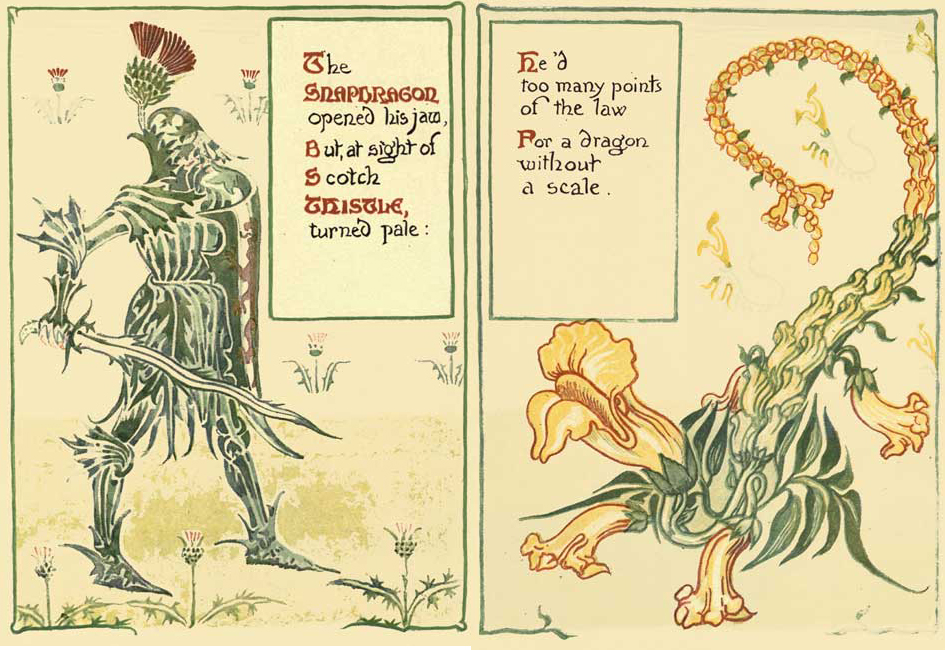

Crane used the natural flowing lines of flowers in much of his work.
Eespecially in his work with flowers, the viewer can detect ways that the image is a design — Crane often bases his designs on curves and repetition.

In the above image, the design runs through and weaves itself into the border of the page.
Crane was also a master of framing and bordering his pages.

A Chronological List of Some of Walter Crane’s Books.

Old Mother Hubbard was Published in 1873
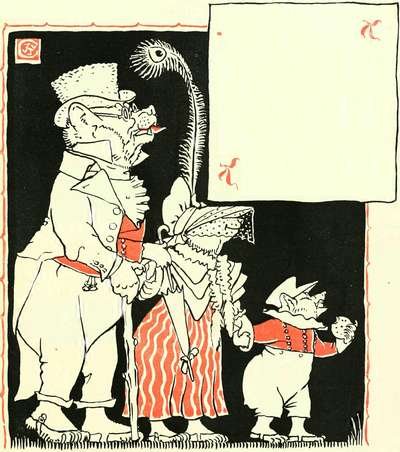
The Three Bears was also Published in 1873

The Frog Prince 1874

Goody Two Shoes 1874
Puss in Boots – 1875
Puss in Boots 1875
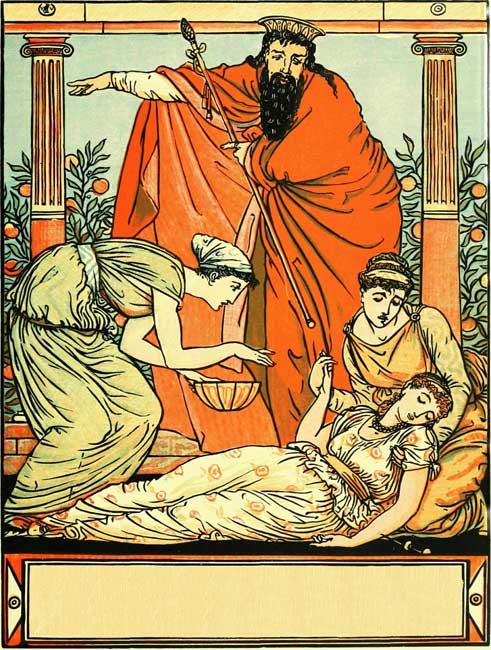
The Sleeping Beauty 1876.

Baby’s Opera 1877
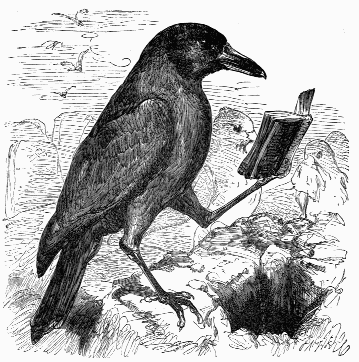
Mother Goose Nursery Rhymes 1877.

Winter Nosegay, 1881
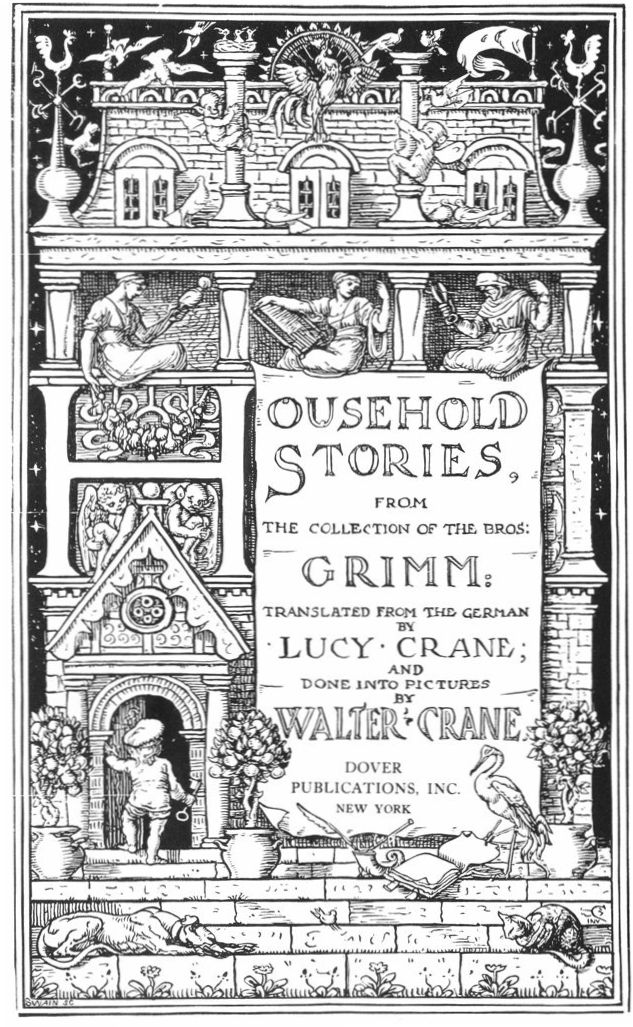
Household Stories from Grimm 1887 
Legends for Lionel 1887

Queen Summer: Or The Tourney Of The Lily And The Rose 1891

Renascance A Book of Verse 1891
![[Image unavailable.]](https://www.gutenberg.org/cache/epub/51732/images/imageangel.jpg)
Vision of Dante A Story for Little Children 1892
![[Image unavailable.]](https://www.gutenberg.org/cache/epub/51732/images/imagebeatrice.jpg)
Vision of Dante A Story for Little Children 1892

A Floral Fantasy in an Old English Garden 1899

A Masque of Days 1901

A Flower Wedding 1905

Flowers from Shakespeare’s Garden 1909
1913 – Illustrations for Mary MacGregor’s Story of Greece.
Discover more from Jacki Kellum
Subscribe to get the latest posts sent to your email.
